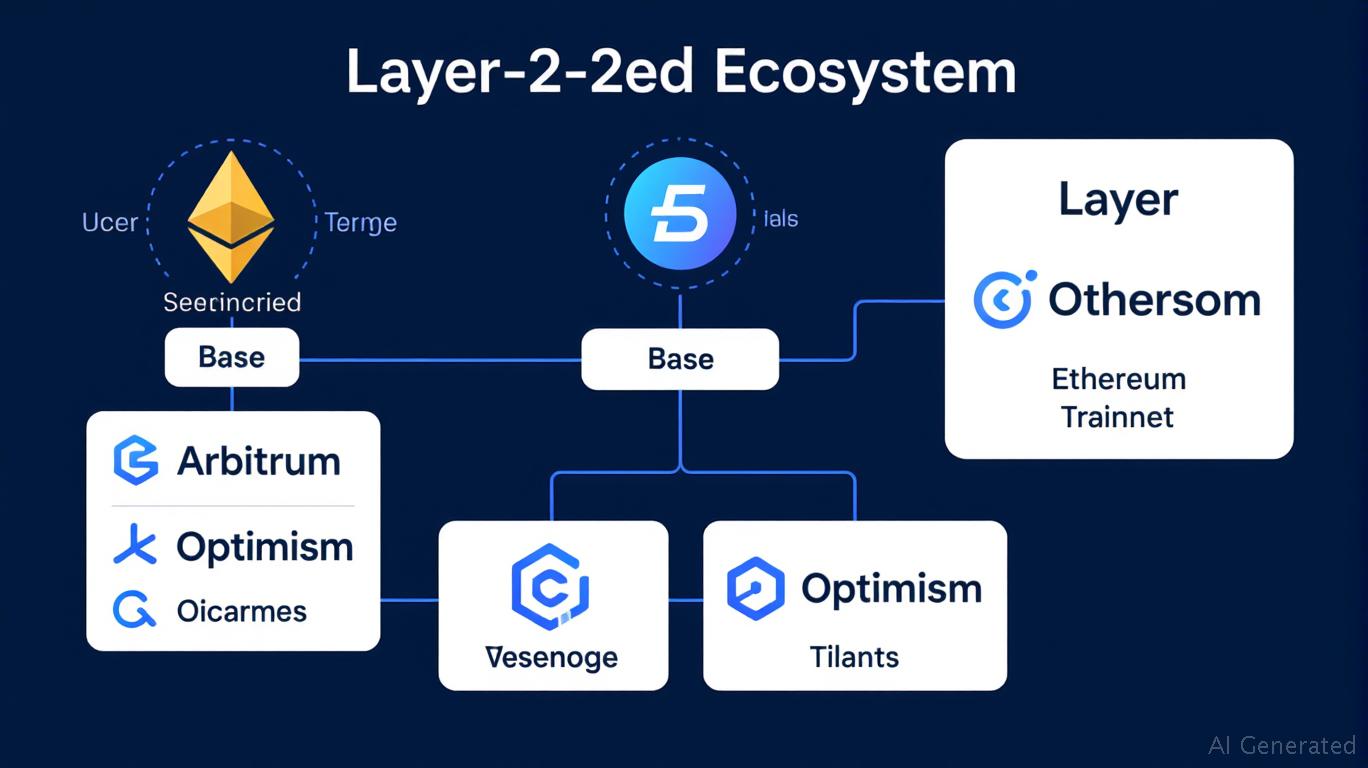Ethereum's Core Resurgence vs. Coinbase Base Outflows: A Shift in Blockchain Capital Allocations
Ethereum's ongoing evolution as a decentralized infrastructure backbone is colliding with the realities of Layer-2 competition, creating a paradox: while Ethereum's core network fundamentals strengthen, its dominant Layer-2 platform, Coinbase's Base, faces outflow pressures. This dynamic reflects a broader reallocation of capital within the blockchain ecosystem, driven by institutional strategies prioritizing scalability, cost efficiency, and regulatory clarity. Here's why investors should focus on Ethereum's core while navigating the crosscurrents of Layer-2 competition.

Ethereum's Core: Institutional Momentum and Deflationary Dynamics
Ethereum's resurgence isn't just about price—it's about the deepening institutional conviction in its foundational role. DeFi Total Value Locked (TVL) hit $112 billion by June 2025, a 30% increase since late 2024, driven by protocols like AAVE (which commands 60% of the lending market). Meanwhile, Ethereum's supply has trended deflationary post-Merge, with a net reduction of 346,000 ETH due to more burn than issuance.
Institutional capital is following these fundamentals.
ETFs saw $1.16 billion in monthly inflows in June 2025—up 10x from January 2024—totaling $10.32 billion under management. SharpLink Gaming's 198,000 ETH corporate treasury and BitMine Immersion's $250M Ethereum-focused fund highlight how enterprises are diversifying beyond . This isn't just speculative interest; it's about Ethereum's role as a settlement layer for stablecoins (USDT, USDC) and its modular roadmap, including the Pectra upgrade doubling blob capacity to 6 per block.Base's Outflows: A Node in the Ecosystem, Not the Ecosystem
Coinbase's Base, while processing 7.5 million daily transactions in Q2 2025, faces headwinds that underscore the risks of betting on any single Layer-2. A $237M ETH whale deposit to exchanges in June—likely tied to Base's token (BASE) sell-offs—highlighted short-term volatility. Base's success has been tied to retail-driven momentum, such as memecoins and airdrops, but its reliance on Ethereum's mainnet for settlement (via blobspace) means its fate remains tethered to Ethereum's core.
The outflows reflect a broader truth: Layer-2s are nodes in Ethereum's network, not independent ecosystems. While Base's high fees (spiking during “blobscription” events) and centralized governance model may deter long-term institutional adoption, its role in driving Ethereum's TVL growth remains critical. The real risk isn't Base's performance alone, but whether Layer-2s collectively can sustain Ethereum's growth without draining its mainnet's value accrual.
Institutional Strategies: Layer-2s as Tools, Not Ends
Institutional players aren't fleeing Ethereum—they're optimizing their allocations. The SEC's pending decision on whether Ethereum ETFs can stake holdings will unlock yield-driven demand, but the real play is in Ethereum's ecosystem. For example, Robinhood's Arbitrum-based Layer-2 integration, offering tokenized equities and staking, shows how Ethereum's modular design is attracting traditional finance.
Institutions are treating Layer-2s as tools to access Ethereum's utility, not standalone investments. This means capital reallocation is happening within Ethereum's ecosystem, not away from it. The key is to bet on Ethereum's core—its deflationary supply, DeFi dominance, and protocol upgrades—while being selective about Layer-2 exposure.
Risks: Centralization and Regulatory Uncertainty
The risks are twofold. First, Ethereum's validator centralization (Lido, Binance,
control ~40% of staked ETH) threatens its decentralization ethos. Second, regulatory hurdles like the SEC's stance on staking remain unresolved. If Ethereum ETFs can't stake, institutional inflows could stall.Investment Takeaways
- Long Ethereum's Core: Institutions are right to prioritize Ethereum's fundamentals. Buy Ethereum ETFs (ETH ETFs) or consider direct exposure via staking if regulatory clarity emerges.
- Layer-2s as Plays on Specific Use Cases: Allocate to Layer-2s like Base or Arbitrum only for their specific advantages (e.g., Base's retail liquidity, Arbitrum's DeFi depth), not as standalone bets.
- Watch for Technical Breakouts: Ethereum faces $2,600 resistance; a breakout could signal a move toward $5,000 by year-end. Conversely, a drop below $2,420 risks a bearish spiral.
The Ethereum ecosystem is evolving into a scalable, institutional-grade platform, even as its Layer-2 nodes face growing pains. The reallocation of capital isn't a retreat from Ethereum—it's a repositioning toward its core strengths. Investors who focus on Ethereum's fundamentals while navigating Layer-2 trade-offs will position themselves for the next leg of its journey.
Sign up for free to continue reading
By continuing, I agree to the
Market Data Terms of Service and Privacy Statement

Comments
No comments yet